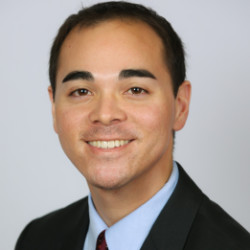“The patient’s mother passed away at 48,” I said in the middle of one of my case presentations. My instructor immediately stopped me. “Don’t say she passed away. Or expired. She died. Don’t be afraid to say that.”
His comments made me start thinking about the “D-word” and our relationship with death in medicine. Our reliance on its various euphemisms suggests that the relationship a physician has with death is far from simple.
One of the fundamental and seemingly paradoxical truths of life is that with each passing day, we draw closer to death. From the moment we are born, every milestone along our journey through life brings us nearer to the end. As clinicians, we occupy a unique position between the fragility of life and the inevitability of death. On the one hand, advances in medical knowledge have made it easier than ever to prevent what would once have been considered certain death. In this sense, one could argue that the practice of medicine acts as a buffer against some of life’s inherent fragility. On the other hand, recognizing that the only guaranteed outcome for all patients we treat is death can be sobering. It prompts us to ask: What is our role as physicians? To what extent can we guard against life’s only certainty? And how do we cope with the sense of responsibility when that inescapable fate becomes a reality?
The primum non nocere in medicine can initially sound like an obvious maxim: “First, do no harm.” Of course, as physicians, we would never seek to put our patients in harm’s way. However, when death enters the frame, the picture changes. Sometimes, to “do no harm,” a physician must avoid the temptation to do anything at all. In medicine, we want to think that every diagnosis has a treatment that we can provide. The reality is that there are times when our treatment or operation is decidedly not in the patient’s best interest or wishes.
But when we see a patient on the brink of death and realize that we possess a skill set that may delay this outcome, it seems immoral not to use it. After all, we want to fulfill the secundum cavere, tertium sanare part of this phrase, which means “to take care, and to heal.”
It is a delicate balance to strike, and in the context of death, it becomes increasingly tempting to bypass “first do no harm” in favor of “to take care” and “to heal.” If the patient dies in the setting where a lifesaving measure has failed, then we may wonder if we have failed in our chief task of doing no harm. Was the patient already on their way to death? Did we accelerate the process? Or worse, did we somehow facilitate death’s entry? This is the burden of responsibility a physician must bear. For all our capacity to help a patient escape death, we exhibit an equal capacity to invite it.
However, it remains important to challenge this notion. Death is one of the most feared outcomes by all physicians yet it is also guaranteed. Some physicians, like those working in palliative care, may be better able to reconcile the duality of the physician’s role as it relates to death. But death is constantly lurking in the background of medical practice, implicitly shaping how we define a patient’s life course. Perhaps it is our proximity to death that makes confronting it so painful. When one slight error or misjudgment is enough to permanently end someone’s life course, it is only natural to fear it. In medicine, it can seem that the implicit question in patient death is the notion of incompetence or mismanagement. What, then, should be the modern physician’s approach to death?
The first step may just be having some sort of “approach to death” in the first place. This might be a kind of framework or set of principles. Having an approach to death allows patients and clinicians alike to recognize that death is in the natural course of life. Given that physicians can significantly influence their patients’ understanding of their health, modeling this behavior is highly beneficial. If the physician does not fear death, should the patient? This is not to say a physician should deliberately engage in neglectful practice under the pretense that it is “just a matter of time,” but rather death can be an important part of the initial differential; one that we don’t need to try to escape or avoid per se, but rather something we can try to pause for the time being.
This can allow us to have more meaningful conversations with those in our care. Instead of telling a patient’s family that “their prognosis is poor,” a phrase that at best is vaguely negative and at worst completely uninformative, we can have death be a part of the conversation. Being frank and direct with the patient and/or their family about death can initially be uncomfortable, but pays dividends in the long run. It minimizes room for misunderstanding or surprises on both sides and provides patients and clinicians with ample time to shift their approach focused on life to one that is preparing for death.
That being said, the modern physician cannot craft an approach to death without looking inward. Why does death, a critical aspect of our occupation, bother us so deeply? Although there is merit to many of the reasons above, by and large, many of us find that patient death serves as an uncomfortable reminder of our own mortality. As physicians, we confront death more frequently than the average individual, but we also have a unique view of the various forms it can occupy and the seemingly innocuous ways it can occur. A patient’s death can hold up a very real mirror to our own lives — in all of their strengths, inadequacies, and precariousness.
When this happens, the professional suddenly becomes personal, which could undermine our ability to see the patient’s death for what it is. Oftentimes, we avoid looking at death head-on out of the fear that confronting it would say far too much about our own precarious existence. About the fact that professional success is not a refuge from personal calamity. Or that we can do everything right and still end up with things going horribly wrong. Or that our dedication and commitment to the cause of medicine do not preclude us from disappointment. It is possible that on the treadmill of delayed gratification, some of us won’t be able to see the fruits of our labor.
Death can be a grave reminder of our entitlements and the various ways they will not be met. As such, we prefer to avoid it wherever possible. But in life, death is the only entitlement we have, and the sooner we can come to terms with it, the sooner we open an entirely new world for both ourselves and the patients we treat. If we retain a sense of unflinching honesty when dealing with death, we can, in the truest sense of the phrase, realize the primum non nocere, secundum cavere, tertium sanare of medicine. We release the patient from the harm of our fears and biases, we care for them in the remaining life that is left, and we can heal them and their families as their journey in life prepares to transition to a new journey in death.
As a physician, how has your relationship with death changed? Share in the comments.
Neha Sahota is a second-year medical student at USC Keck. Outside of medicine, she likes to read, travel, and try new coffee shops. You can find her here on LinkedIn. Neha Sahota is a 2024–2025 Doximity Op-Med Fellow.
Illustration by Jennifer Bogartz







